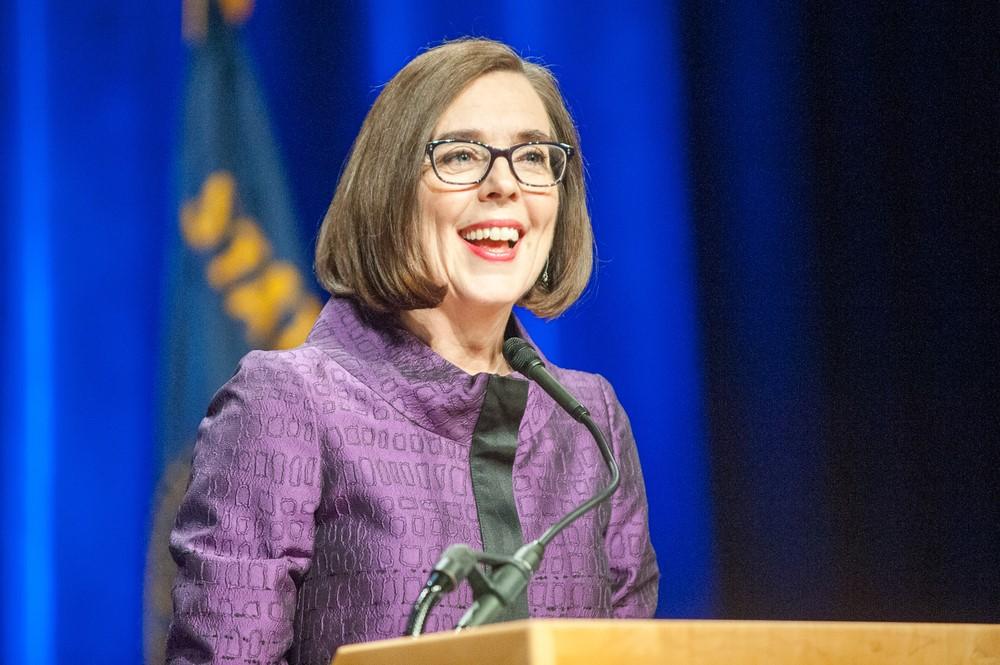
Oregon’s vaccine rollout is on track even after ice storms hammered the state and winter weather delayed delivery of 67,000 doses of Moderna vaccine this week, public health officials said Friday.
This doesn’t mean everyone can access a dose as quickly as usual. Some clinics this week rescheduled or postponed appointments due to the storm and delivery delay. But Oregon is sticking with its original rollout schedule and opening vaccination to more young seniors in the next two weeks, until the final senior rollout, for those age 65-69, starts March 1.
Gov. Kate Brown said Friday the state next week will release more details about the rollout phase that is to follow. The next group -- known as 1b -- is expected to include front-line workers and people with underlying medical conditions, among others, before the general population, following recommendations from an advisory committee. The front-line worker group encompasses hundreds of thousands of people.
The state’s current vaccination work started with the 1a group, which includes hospital workers and other health care providers, and staff and residents in long-term care facilities. The state also has made vaccinations available to K-12 teachers and school support staff and early childhood instructors since late January. Seniors 80 and older became eligible the week of Feb. 8, followed by seniors 75-79 this week.
“Nothing that’s happened in the past week will slow down our schedule,” Oregon Health Authority Director Patrick Allen said in a Friday news conference.
So far, providers have administered 755,657 shots of the vaccine -- either first or second doses -- to about half a million of Oregon’s 4.2 million population. Of those, about 233,000 are fully vaccinated with both of the required doses.
Providers have vaccinated 95,021 people 75 and older with at least one dose. That’s 32 percent of that group of eligible seniors, Allen said.
Overall, one in five seniors age 65 and older have had at least one dose, a figure that takes into account younger seniors who are eligible because they live in long-term care facilities. However, the state is still working to vaccinate that group, particularly residents in adult foster homes that have five or fewer people.
This week, Oregon providers averaged giving more than 14,000 doses a day, despite the storm, Allen said. The Oregon Health Authority doesn’t directly put doses in arms, but allocates where the federal government and pharmaceutical companies send doses. Hospitals, clinics and public health agencies are among the entities that get doses.
The storm temporarily cut the pace inoculations. On the Wednesday and Thursday before the ice storm, providers gave more than 23,000 doses. That dropped to 6,439 doses on Saturday and under 5,000 doses on Sunday. But four days later, on Thursday, the state hit 18,709 doses, data show.
As it has throughout the vaccination drive, a limited supply from manufacturers and the federal government has curbed the pace of vaccinations. Oregon is slated to get about 107,000 doses next week.
Separately, the federal retail pharmacy program in the state will get an additional 12,800 doses next week, which will boost that program’s weekly total to more than 25,000 doses.
Oregon’s federally qualified health care centers, which provide primary medical care to underserved communities, including minorities and low-income people, are getting more doses from the federal government, separately from the bulk allocation to Oregon. The Centers for Disease Control and Prevention is doubling the current 6,000-dose weekly allotment that goes to nine or 10 federally qualified health care centers in the state. Those allotments are separate from the bulk federal allocation to the state.
To try to make sure minorities and other underserved groups get vaccinated, Oregon is also directing some of its bulk federal allocation to the health centers.
From its bulk allotment, the state is providing 3,200 doses to the centers for next week. Public health officials anticipate increasing that to 4,100 the following week of March 1 and to 4,200 a week in following weeks.
The state’s rollout of the vaccine so far has not gone proportionately to people of color, partial available state data show.
For example, Latinos and Hispanics represent 13% of the state’s population and experienced 26% of COVID-19 cases. However, only 5% of vaccinations so far have gone to the Latinx population.
Allen said one reason is that the 1a group -- health care workers and others -- skews whiter than the overall population. As the state adds more frontline workers and people with underlying medical conditions into the vaccine eligibility pool, that trend will change, as those groups have more people of color, Allen said.
The delayed 67,000 Moderna doses, meanwhile, could arrive as early as Saturday or next week. The regular vaccine shipments that are to arrive next week will likely come late in the week, a spokesman for the health agency said.
However, with weather still in play, the Centers for Disease Control and Prevention has not given the state any firm dates for deliveries.
You can reach Ben Botkin at [email protected] or on Twitter @BenBotkin1.